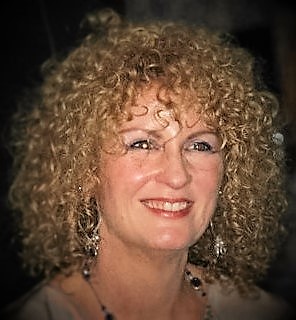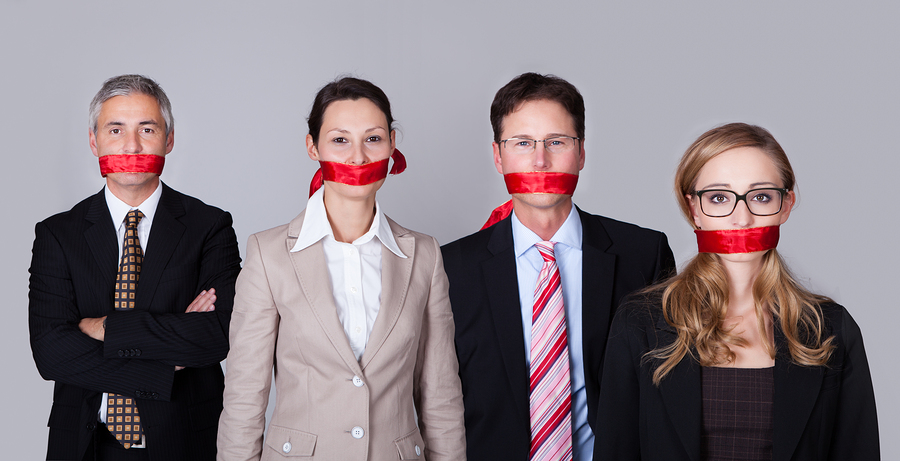Recent revelations of widespread sexual abuse and harassment ignited the global #MeToo and #TimesUp movements, just as exposés of historical child sexual abuse in institutions have triggered numerous national investigations, The media regularly shines a light on stories of discrimination, bullying and abuse at the hands of powerful and influential figures within organisations and institutions.
Equally as shocking as the accounts of victims’ experiences, is how many people beyond the perpetrators and their victims had knowledge of these crimes and malignant behaviours, but remained silent, sometimes for decades. Victims themselves also being silenced one way or another, Time Magazine used ‘The Silence Breakers’ to describe those who helped create “an umbrella of solidarity for millions of people to come forward with their stories” of sexual abuse, when naming them Person of the Year.
In addition to ‘silencing’ of individuals and organisations the other common denominator is these crimes and abuse occurred in workplace settings, enabled through the perpetrators’ role in their organisation.
Accounts of workplace cultures of silence
The Report of Abuse in Defence published in 2014 as a result of the Australian Defence Force (ADF) Taskforce assessment and response to historic individual cases of workplace abuse and harassment in Defence over a period of many decades, highlighted the central role of silence.
“In many cases, complainants reported that this pervasive ‘culture of silence’ was reinforced by the fact that staff or other superiors were aware of some or all of the abuse, and either did nothing to prevent it, and in some instances actively encouraged it. Reinforcing an accepted code of silence … implicitly approved by the hierarchy.”
In 2017 as part of the ADF’s cultural reform work it launched a powerful video Silence is the Accomplice, raising awareness of the impacts of Family and Domestic Violence on individuals, their families and the Army as an organisation.
One of the primary goals of Australia’s recent Royal Commission into Institutional Responses to Child Sexual Abuse was to make recommendations to “remove current impediments that include addressing historical failures in reporting, investigating and responding to allegations, and incidents of systemic failures by institutions.”
The Commission’s report talked to the role of secrecy and silence,
“school cultures that permitted child sexual abuse and silenced victims; priests misusing the practice of religious confession to facilitate child sexual abuse or to silence victims; and leaders’ efforts to silence survivors and to condemn those who would not be silent.”
Described as remarkable of organisations dedicated to care for children “was the failure of the leaders of institutions to respond with compassion to the survivor.” Although victims and their families spoke of “a childhood lost, innocence stolen, and a life journey irreparably and adversely changed” sometimes tragically resulting in the death of victims,
“some leaders felt their primary responsibility was to protect the institution’s reputation, and the accused person.”
Backlash Against Non-Disparagement Clauses details the extremely common use of legal means used to silence victims in settlement agreements that “prohibit true but negative statements and opinions. In addition, they typically prohibit employees from saying anything negative not just about the company itself, but also about its current and previous owners, directors, officers, employees, subsidiaries and parent companies.” Whilst legal precedents exist in some jurisdictions whereby non-disparagement clauses are not binding in respect to reporting criminal activity, there’s also circumstances where this has not been the case.
“It may be obvious that non-disparagement agreements allow employers to cover up discrimination, retaliation and violations of other employment laws. But they also permit companies to sweep other violations of law under the rug by discouraging, if not prohibiting, their former employees from blowing the whistle to the local, state and federal government, the press, or virtually anyone else. As a result, while they can be very valuable to employers, they can be even more harmful to the public.”
To understand why there aren’t more Workplace Silence Breakers also requires appreciation of the psychological impact of abuse, bullying, discrimination and harassment.
Shame, secrecy and silence associated with trauma
The ADF Taskforce report highlighted how many victims felt unable to talk with anyone about what had happened to them, often long after the abuse had occurred, and included many heart wrenching victim statements explaining why.
“I carry these experiences with me every day and to this day I still feel embarrassment and shame about the ugliness of these events which crushed my spirit as a 16 year old. Throughout my life I have concealed the ignominious truth from my schoolmates and teachers, work and sporting colleagues, friends and family. I simply couldn’t bear the thought of revisiting the degrading humiliation and pain.
Last year, at age 75, I finally summoned the courage to divulge the sordid truth to my family. Time will not heal but may help us understand the massive impact that these life changing events have had on all of us.”
In #MeToo Is Clumsy, Crucial And Long Overdue Helen Epstein highlights that
“trauma changes our bodies and our sense of self in the world. It injures, violates, damages, devalues. But, above all, it – paradoxically – instills a sense of shame in the victim rather than in the perpetrator.”
Epstein’s notes that “even a massive collective trauma such as the Holocaust had the effect of silencing many survivors about their experience for decades before best-selling books and television shows publicized their experiences.” She also refers to Dr Herman’s seminal Trauma and Recovery published in 1992, that catalogued times in history when “not only individuals but entire societies have alternated between periods of remembering and forgetting painful traumatic events.”
“Shame, secrecy and silence are the deadly trio that prolongs and abets the effects of trauma. That trio is often enacted by the abuser, the victim, and bystander – or all three.”
Whilst media coverage, independent investigations, social media and social movements enable some victims of workplace abuse, discrimination, bullying and harassment to share their previously untold stories, the cost of doing so also keeps many others silent.
Victim blaming and gaslighting
The good thing about social media is it gives everyone a voice. The bad thing is … it gives everyone a voice.” Brian Solis
Social media is a powerful way to amplify stories of abuse and injustice in workplaces that mobilises positive action and responses, whilst also providing victims with support and validation for breaking their silence. It equally provides a voice for others to directly blame victims for what they experienced, or indirectly blame them by rationalising the unthinkable actions of the perpetrators.
Blaming the victim: what really influences our sense of control and culpability in societygives examples of responses to accusations of rape, sexual abuse and harassment claims such as,
“men get away with this because they are allowed to get away with it by the women.”
The Just World Hypothesis explains this as people needing to rationalise and make sense of the world, which includes coming up with reasons why victims may have deserved what otherwise may appear to be incomprehensible injustice.
There’s also the insidious behaviour of gaslighting victims, these are some examples,
“She brushed me off, and made it seem like I was crazy,” was the experience a victim recounted when she’s complained about Dr Larry Nassar. Other victims sharing similar responses when they reported Nassar’s abuse:
“He’s an Olympic doctor.” “No way.” You “must be misunderstanding what was going on.”
Name calling, undermining the credibility of victims and planting seeds of self-doubt, also claiming perpetrators are the real victims are hallmarks of gaslighting, often used by employers and other protectors of a perpetrator. A Message to Women From a Man: You Are Not “Crazy” describes gaslighting of victims as acts that “steal their most powerful tool: their voice.”
Silent Bystanders
In addition to the impact trauma may have on silencing people who witness or have knowledge of abuse, the diffusion of responsibility theory posits that the greater the number of witnesses to an injurious event, the less likely individuals will take action to help the victim. Why and How Do We Help? From one-ness to we-ness: The courage needed to be a hero describes this as people asking themselves: “Why should I help when there’s someone else who could do it?”
Fear of retribution and/or being the next target of a bully or abuser can also motivate witnesses to remain silent, some may even go as far as appearing to condone the behaviour to protect themselves.
Enabling more Workplace Silence Breakers or removing the need for them?
In Making the Silence Breakers Time’s Person of the Year won’t change anything Mary Shannon Little maintains
“the ground zero for real change remains in the workplace. Until the boards, CEOs, and senior managers who muted the Silence Breakers by turning a deaf ear or worse, are held accountable, there will be no real cultural shift. And this moment will pass.”
As highlighted in Entire board of USA Gymnastics resigns after enabling Nassar abuse even in an extreme, high profile case resulting in a 175 year prison sentence, there is a reluctance of boards and other management ‘in the know’ accepting accountability. “USAG received early reports of Nassar’s abuse, but dragged its feet to take any action” until “an ultimatum put forth by the US Olympic Committee, which urged the board to resign or lose status as a governing body.”
Numerous laws and regulations already require workplaces to be safe and free from harassment, abuse, bullying and discrimination, and these laws and associated punishments could be strengthened. It’s also reasonable to argue that some organisations and institutions will always lack the ethical and moral fortitude to voluntarily comply with their legal and regulatory requirements regardless of the penalties.
There is an urgency to work on two fronts when is comes to workplace abuse, bullying, harassment and discrimination:
- Removing the need for Silence Breakers as much as possible. A good place to start is governments implementing the recommendations of existing comprehensive and independent investigations, that include dealing with actions of Boards and senior management that protect their organisation and perpetrators ahead of victims. In addition to long overdue cultural reforms within some organisations and institutions.
- Simultaneously taking action to better enable, support and protect Workplace Silence Breakers, recognising that we – individuals, organisations, institutions and society – will always need them.
My profound gratitude to The Royal Commission into Institutional Responses to Child Sexual Abuse in Australia, for hearing the many previously untold stories provided by numerous families including mine, on behalf of a much loved and missed family member no longer able to do so.
The cost to individuals, organisations and societies when its’ members are silenced is profound, acknowledging my many conversations with Ram Vemuri on this topic which provide much inspiration. Ram co-authored with Nancy Billias The Ethics of Silence: An Interdisciplinary Case Analysis Approach and is continuing his work and research in this area.


